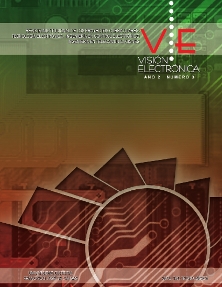DOI:
https://doi.org/10.14483/22484728.18412Publicado:
2019-03-13Número:
Vol. 2 Núm. 1 (2019): Edición especialSección:
Visión InvestigadoraSupervised classifiers of prostate cancer
Un estudio geométrico sobre imágenes de resonancia magnética ponderadas T2 (T2W) y por difusión (DWI-ADC)
Clasificadores supervisados del cáncer de próstata
Palabras clave:
Cáncer, Diagnóstico, Geometría, Resonancia magnética, Próstata (es).Palabras clave:
Cancer, Diagnosis, Geometry, Magnetic resonance, Prostate (en).Descargas
Resumen (en)
Prostate cancer is a common type of cancer in men, it is slow and silent, and they respond to timely treatment.
There is great importance in the early diagnosis when it has not yet invaded the prostate gland, currently there is a need to deepen the objective prediction tools. This article presents an analysis and development of an application for early diagnosis of this cancer from the multiparameter magnetic resonance of patients, in this case patient images are used to detect lesions in the prostate and the Data and Reports System Prostate images (PI-RADS).
The objective of the method is to provide a contribution to medicine in the hands of all clinical staff responsible for the diagnosis of prostate cancer, a method of prediction, as a support for diagnosis, seeking stability and tranquility of the affected patients.
Resumen (es)
El cáncer de próstata es frecuente en los hombres, es lento y silencioso, y responde a un tratamiento oportuno. Existe una gran importancia del diagnóstico temprano cuando aún no ha invadido la glándula prostática; actualmente, se ha visto la necesidad de profundizar en las herramientas de predicción objetiva. En este artículo se presenta un análisis y desarrollo de una aplicación para diagnóstico temprano de este cáncer a partir de la resonancia magnética multiparamétrica de pacientes, usándose imágenes de pacientes para detectar lesiones en la próstata y el Sistema de Datos e Informes de Imágenes de próstata (PI-RADS). Se obtiene un método que proporciona al personal clínico encargado del diagnóstico de cáncer de próstata un método de predicción aceptable como soporte al diagnóstico, estable, y que no intranquiliza pacientes afectados.
Referencias
K. Kitajima, Y. Kaji, Y. Fukabori, K. Yoshida, N. Suganuma and K. Sugimura, “Prostate cancer detection with 3 T MRI: Comparison of diffusion-weighted imaging and dynamic contrast-enhanced MRI in combination with T2-weighted imaging”, Journal of Magnetic Resonance Imaging, vol. 31, no. 3, pp. 625-631, 2010. https://doi.org/10.1002/jmri.22075
S. Liu, H. Zheng, Y. Feng and W. Li, “Prostate cancer diagnosis using deep learning with 3D multiparametric MRI”, Spie Medical Imaging 2017: Computer-Aided Diagnosis, 2017. https://doi.org/10.1117/12.2277121
H. Lamadrid Figueroa, “Cáncer de próstata: Resultados del estudio de la Carga Global de la Enfermedad”, p. 35, 2015.
G. Litjens, O. Debats, J. Barentsz, N. Karssemeijer and H. Huisman, “Computer-Aided Detection of Prostate Cancer in MRI”, IEEE Transactions on Medical Imaging, vol. 33, no. 5, pp. 1083-1092, 2014. https://doi.org/10.1109/TMI.2014.2303821
F. Gómez and R. Gaston, “Cáncer de Próstata”, 2015. [Online]. Available at: https://www.icua.es/urologia-avanzada/cancer-de-prostata/
C. Hoeks et al., “Prostate Cancer: Multiparametric MR Imaging for Detection, Localization, and Staging”, Radiology, vol. 261, no. 1, pp. 46-66, 2011. https://doi.org/10.1148/radiol.11091822
American Society Clinical Oncology, “Cáncer de próstata: diagnóstico”, 2018. [Online]. Available at: https://www.cancer.net/es/tipos-de-c%C3%A1ncer/c%C3%A1ncer-de-pr%C3%B3stata/diagn%C3%B3stico
D. Mitchell and M. Cohen, “MRI principles”. Philadelphia, Pa.: Saunders, 2004.
T. Hambrock et al., “Prospective Assessment of Prostate Cancer Aggressiveness Using 3-T Diffusion-Weighted Magnetic Resonance Imaging–Guided Biopsies Versus a Systematic 10-Core Transrectal Ultrasound Prostate Biopsy Cohort”, European Urology, vol. 61, no. 1, pp. 177-184, 2012. https://doi.org/10.1016/j.eururo.2011.08.042
K. Nguyen, B. Sabata and A. Jain, “Prostate cancer grading: Gland segmentation and structural features”, Pattern Recognition Letters, vol. 33, no. 7, pp. 951-961, 2012. https://doi.org/10.1016/j.patrec.2011.10.001
R. Christian, F. Juan and M. Alejandro, “Detección precoz de cáncer de próstata: Controversias y recomendaciones actuales”, Revista Médica Clínica Las Condes, vol. 29, no. 2, pp. 128-135, 2018. https://doi.org/10.1016/j.rmclc.2018.02.013
K. Clark et al., “The Cancer Imaging Archive (TCIA): Maintaining and Operating a Public Information Repository”, Journal of Digital Imaging, vol. 26, no. 6, pp. 1045-1057, 2013. https://doi.org/10.1007/s10278-013-9622-7
I. Chan et al., “Detection of prostate cancer by integration of line-scan diffusion, T2-mapping and T2-weighted magnetic resonance imaging; a multichannel statistical classifier”, Medical Physics, vol. 30, no. 9, pp. 2390-2398, 2003. https://doi.org/10.1118/1.1593633
N. Karssemeijer, J. Otten, H. Rijken and R. Holland, “Computer aided detection of masses in mammograms as decision support”, The British Journal of Radiology, vol. 79, no. 2, pp. 123-126, 2006. https://doi.org/10.1259/bjr/37622515
A. Firjani et al., “A diffusion-weighted imaging based diagnostic system for early detection of prostate cancer”, Journal of Biomedical Science and Engineering, vol. 6, no. 3, pp. 346-356, 2013. https://doi.org/10.4236/jbise.2013.63a044
M. Stumpe, “Improved Grading of Prostate Cancer Using Deep Learning”, 2018. [Online]. Available at: https://ai.googleblog.com/2018/11/improved-grading-of-prostate-cancer.html
N. A. Ramírez Pérez, E. G. Vargas and O. M. Forero Cuellar, “Supervised Classifiers of Prostate Cancer from Magnetic Resonance Images in T2 Sequences”, 14th Iberian Conference on Information Systems and Technologies (CISTI), Coimbra, Portugal, 2019. https://doi.org/10.23919/CISTI.2019.8760647
E. Pietka, “Advances in Intelligent Systems and Computing”, pp. 295–296, 2012.
D. K. Jones, “Diffusion MRI: theory, methods, and applications”, 2010, Oxford University Press. https://doi.org/10.1093/med/9780195369779.001.0001
P. Vos, T. Hambrock, J. Barenstz and H. Huisman, “Computer-assisted analysis of peripheral zone prostate lesions using T2-weighted and dynamic contrast enhanced T1-weighted MRI”, Physics in Medicine and Biology, vol. 55, no. 6, pp. 1719-1734, 2010. https://doi.org/10.1088/0031-9155/55/6/012
M. P. Leonor and L. V. Tercero, “Inteligencia artificial en el cáncer de próstata”, 2018. [Online]. Available at: http://www.die.upm.es/sites/default/files/files/Congreso_IMA2_2018-19/Poster_Penas_Vizoso.pdf
Y. Baştanlar and M. Özuysal, “Introduction to Machine Learning”, miRNomics: MicroRNA Biology and Computational Analysis, vol. 1107, pp. 105-128, 2013. https://doi.org/10.1007/978-1-62703-748-8_7
Cómo citar
APA
ACM
ACS
ABNT
Chicago
Harvard
IEEE
MLA
Turabian
Vancouver
Descargar cita
Licencia
Derechos de autor 2019 Visión electrónica

Esta obra está bajo una licencia internacional Creative Commons Atribución-NoComercial 4.0.
.png)
atribución- no comercial 4.0 International






.jpg)





